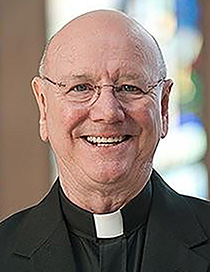
Faith

This chapter's retention of tradition, along with an opening to freedom, is typical of the desire to balance the old and the new in SC.

SJ
The final two chapters of Sacrosanctum Concilium are anything but an afterthought since, in practice, music and architecture are among the most influential factors in Christian worship. The chapter on music begins by insisting on the importance of what it calls "sacred music," as well as on the retention of the "treasury of sacred music" handed on from the past (SC 112-144). Accordingly, it gives pride of place to Gregorian Chant and, to some extent, to polyphonic music, as well. On the other hand, other kinds of sacred music are not excluded (SC 115). This possibility was to be exploited in the post-conciliar instruction, Musicam Sacram, which gave great latitude in the choice of music that could replace the traditional chants of the Mass (introit, gradual, offertory, Communion). This chapter's retention of tradition, along with an opening to freedom, is typical of the desire to balance the old and the new in SC.
A similar openness to freedom is repeated in the final chapter. In line with the principle of simplicity and clarity urged in SC 21 and 34, a moderation in the placement and number of sacred images in churches is recommended, even though their retention for the devotion of the faithful is praised (SC 124). A somewhat laconic statement in SC 128 mandates that in line with the constitution, liturgical law be amended with regard to "the worthy and well-planned construction of sacred buildings, the shape and construction of altars, the nobility, placing, and security of the Eucharistic tabernacle or altar, the suitability and dignity of the baptistery, the proper ordering of sacred images, and the scheme of decoration and embellishment."
It is important to note that SC made no mention here of a change in the arrangement of liturgical space, which was to become one of the hallmarks of the post-Vatican II liturgical reform, namely that the principal altar in each church must be separated from the wall so that the priest might be able to face over the altar toward the congregation. This issue had been debated in the pre-conciliar commission, but a free-standing altar was mandated only by the subsequent instruction Inter Oecumenici of 1964 (IO 91).
Conclusion
The Pilot is extremely grateful to Father Baldovin for his ready willingness to help us celebrate the 60th anniversary of the Second Vatican Council's document on the sacred liturgy, Sacrosanctum Concilium.
In this and seven previous columns, Father Baldovin has provided a survey of the document. To grasp better his articles and to see the sections he has explained in these columns, there can be no better suggestion than to read the entire constitution. There are multiple versions on the internet. The safest one is that on the Holy See's own website.
Commentaries and histories about the constitution literally abound. They cover the periods prior to the constitution or leading up to it, the process and discussion at the council, and the effects of the constitution as it is still being implemented in the life of our church.
There remains not a little variation in the understanding, meaning, and acceptance of the constitution, especially as regards its implementation -- in parishes, dioceses, and the church in various nations across the globe.
Prior to Father Baldovin's columns, there was a reminder that it takes "at least" a century for a council to be implemented. While this column is dedicated primarily to the liturgy, it is well to recall that the council set out for the church an extensive call to renewal. Although the liturgical renewal is the most obvious for us Roman Catholics, it is not the only agenda item.
Much remains to be done about issues of social justice, promoting peace, ecumenical and interreligious dialogues, serious engagement with civil society, adapting to new and rapidly developing technologies and communications, and more.
There is growing awareness that a fundamental issue underlies much of all the agenda items, including liturgy. That is Christian anthropology, or the understanding, meaning, duty, responsibility, and rights of the human person stemming from our creation by God. Some avert that until that single issue is seriously addressed and considered, and that we have some agreement on it, we will have a very difficult time advancing some of the other agenda items set before us by the council.
Best to all for a Blessed Christmas and a happy and prosperous 2024.
- Father John F. Baldovin, SJ, is professor of Historical and Liturgical Theology at Boston College School of Theology and Ministry.
Recent articles in the Faith & Family section
-
The Eucharistic Prayers -- variety and similarityFather Robert M. O'Grady
-
A Most Unusual Mission MosaicMaureen Crowley Heil
-
A new windScott Hahn
-
Scripture Reflection for May 19, 2024, Pentecost SundayJem Sullivan
-
Can I go to a Methodist church since there are no Catholic churches nearby?Jenna Marie Cooper


















